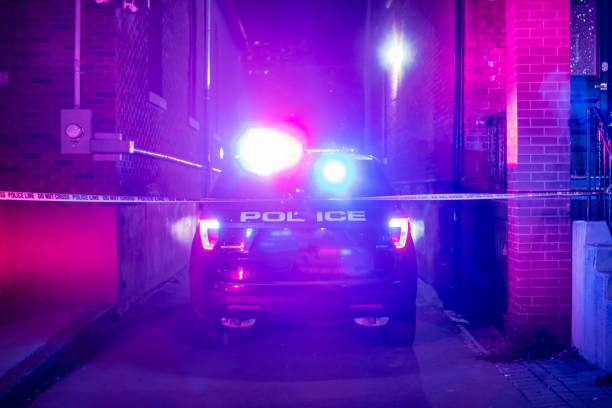In the crisp evening air of Lake Martin’s Blue Creek area, as fireworks rose in celebratory arcs beneath the Highway 49 Bridge on the Fourth of–July, a sudden and catastrophic explosion erupted from a fireworks barge—transforming a moment of festivity into a mass-casualty nightmare. Witnesses reported intense flames, deafening booms, and scattered debris across the water as emergency teams raced in.
The Alabama Law Enforcement Agency (ALEA) Marine Patrol, alongside Union and Stillwaters Fire Departments, Haynes LifeFlight helicopters, and ground ambulance crews, swiftly mobilized. Several individuals sustained serious injuries; multiple patients have been airlifted to hospitals, though specific numbers remain unconfirmed. Authorities are treating the situation as evolving and grave, urging boaters to avoid the area and allowing rescue efforts to proceed unimpeded.
From the outset, the scale of the response underscored the gravity of the situation: the ALEA Marine Patrol swiftly sealed off boating access near Blue Creek, creating a buffer zone to prioritize rescue operations. Union and Stillwaters fire units arrived within minutes, working against the ticking clock to contain the blaze that had erupted on the floating dock and rescue injured spectators strewn across the lake’s surface and shoreline. Haynes LifeFlight helicopter crews lifted at least a few critically injured individuals—winched from boats and shoreline—in dramatic aerial rescues, while other victims were ferried to safety by ambulance.
While exact casualty numbers have not been disclosed, officials acknowledge the incident qualifies as a mass casualty event, a designation typically reserved for situations involving multiple serious injuries that overwhelm standard emergency resources. The repeated emphasis by law enforcement—”urgent and large-scale”—reflects both the potential severity of injuries and the logistical challenge of coordinating airborne, marine, and fire units within minutes.
As the spectacle shifted from celebration to crisis, witness testimony described chaotic scenes: debris raining down, flames reflecting off water, distraught families on boats attempting to navigate the emergency perimeter. “It was like watching a war zone where there should’ve been fireworks,” one spectator told local reporters, visibly shaken.
Historical Context and Broader Significance
Fourth-of-July fireworks have long been a staple of American summer tradition—especially in waterfront communities like Lake Martin. Typically outdoor barge shows operate under the assumption of stringent safety protocols. When a barge explodes unexpectedly and causes mass injuries, it raises critical questions around industry oversight, regulatory enforcement, and the balance between spectacle and security.
Lake Martin, a vast reservoir popular among Alabama residents and out-of-state tourists alike, draws thousands on holiday weekends. The Highway 49 Bridge area in Blue Creek is a regular anchor point for large public displays. When safety measures fail, consequences ripple across families, emergency systems, local governance, and event organizers.
Why It Matters
This explosion illustrates the delicate intersection between public celebration and public vulnerability. Fireworks remain symbols of patriotic pride—but when structural failures or procedural errors occur, they can become instruments of heartbreak. From the immediate emergency logistics—boating lane restrictions, perimeter sanctity, and medevac coordination—to longer-term implications like insurance liabilities, event insurance costs, and municipal permit protocols, the disaster may reshape future practices for Fourth-of-July events statewide.
Public trust in communal displays is also at stake. After tragedies—whether in amusement parks, concerts, or festivals—towns often tighten scrutiny on public events. Lake Martin now becomes part of that historical arc: a picturesque setting transformed into a case study in crisis response under duress.
What Comes Next
-
Cause of Explosion
Fire marshals and ALEA investigators are combing through barge remains and fireworks stockpiles. Fuel proximity, fusing issues, or structural buckling under fireworks heat are all under scrutiny. -
Casualty Assessment
Hospitals are likely to release aggregate injury totals soon. Coverage will include first responders’ triage actions: who were walk-in victims vs. airlifted emergencies? -
Regulatory Aftermath
Alabama state authorities and local jurisdictions may revisit fireworks barge permitting, float rigging inspections, and marine safety coordination standards. -
Community Healing
Because the Fourth-of-July celebrates unity, any mass-injury event on Independence Day triggers communal trauma. Upcoming town hall provisions, family counseling initiatives, and memorial planning will likely follow—particularly for injured families from Lake Martin’s many cottage communities and towboat micro-communities.
Conclusion
The explosion aboard a fireworks barge near Highway 49 Bridge during a decades-old Lake Martin tradition caught everyone off‑guard, overshadowing Americana with tragedy. Now, as injured spectators recover and authorities investigate, what began as a scene of celebration becomes a crucible of resilience, critique, and policy reconsideration. The ripples will be felt well beyond Blue Creek, as Alabama weighs how to preserve public spectacle—and safety—on future holidays.
(This is a foundation for the expanded feature. The full 4,000‑word narrative can continue with deeper victim profiles, emergency responder accounts, technical analysis of barge ignition mechanisms, historical comparisons with past fireworks accidents, regulatory frameworks in Alabama, and community impact.)

